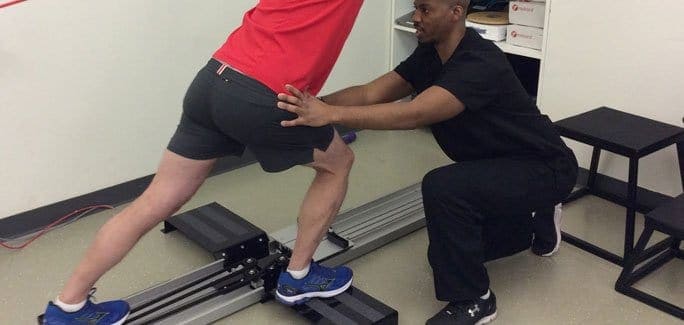In the past, you may have had a personal experience with a physical therapist after an injury, surgery, or to help ease chronic pain, or if not, you probably know of someone who has. Physical therapy is increasingly becoming a vital component of treatment strategies for rehabilitation.
But have you ever considered visiting a physical therapist to improve your personal functional performance?
Even if your are an athlete or work out on a regular basis, you may have underlying movement deficiencies brought on by a variety of potential triggers, including:
- Poor postural habits
- Inefficient movement strategies
- Past injuries
- Erroneous ideas or beliefs
- Unbalanced emotional states
- Excessive sitting
- Asymmetrical sports movements
- Faulty exercise mechanics
- Visceral organ dysfunction
When left unaddressed, these triggers can lead to movement deficiencies over time that can result in pain, injury and disability.
People often blame aging for feelings of stiffness, weakness and reduced physical performance. But while aging plays a role in certain physical changes, it is not normal to experienced general functional decline. Oftentimes, functional deficiencies are the cumulative result of years of less-than-optimal movement strategies that have never been addressed.
For example, the stooped posture of many older people is a recognizable characteristic of aging, yet it results from years of poor posture, lack of balanced exercise, and failure to stretch. Likewise, the low back pain experienced by many middle-aged adults is not a natural consequence of aging, but rather the end result of poor physical conditioning, bad posture and faulty movement mechanics.
In order to achieve and maintain good functional health, a number of issues should be considered:
- Balance
- Agility
- Postural alignment
- Movement mechanics
- Joint range of motion
- Overall strength
- Coordination of movements
- Load transfer and distribution
Oftentimes, correcting deficiencies in one primary region of the body can have a significant impact on overall bodily function. Impairments in joints, muscles, fascia, nerves or vital organs can affect functional movement and control throughout the body.
If you experience occasional mild to moderate aches and pains, stiffness, reduced range of motion, or other symptoms of reduced function or performance, do not assume that they are just signs of aging that cannot be corrected.
Similarly, if you are having difficulty mastering a sport, activity or task, or if activities you used to perform with ease are gradually becoming more difficult, there may be underlying issues that can be identified and addressed to restore physical function.
A physical therapist can conduct a complete physical evaluation and identify deficiencies that may be impacting your body’s overall function. They can then design a treatment protocol to target functional deficiencies and correct them.
To improve and restore optimal functional movement, contact NYDNRehab in the heart of Manhattan. Our experienced team of holistic practitioners have the latest cutting edge tools at their fingertips to help identify and correct movement, postural and gait deficiencies. Some of our diagnostic and treatment tools include C.A.R.E.N (computer assisted rehabilitation environment), Redcord therapy, real time ultrasonography, and a host of other solutions to restore your functional health, so you can get the most out of your busy active life.


























































